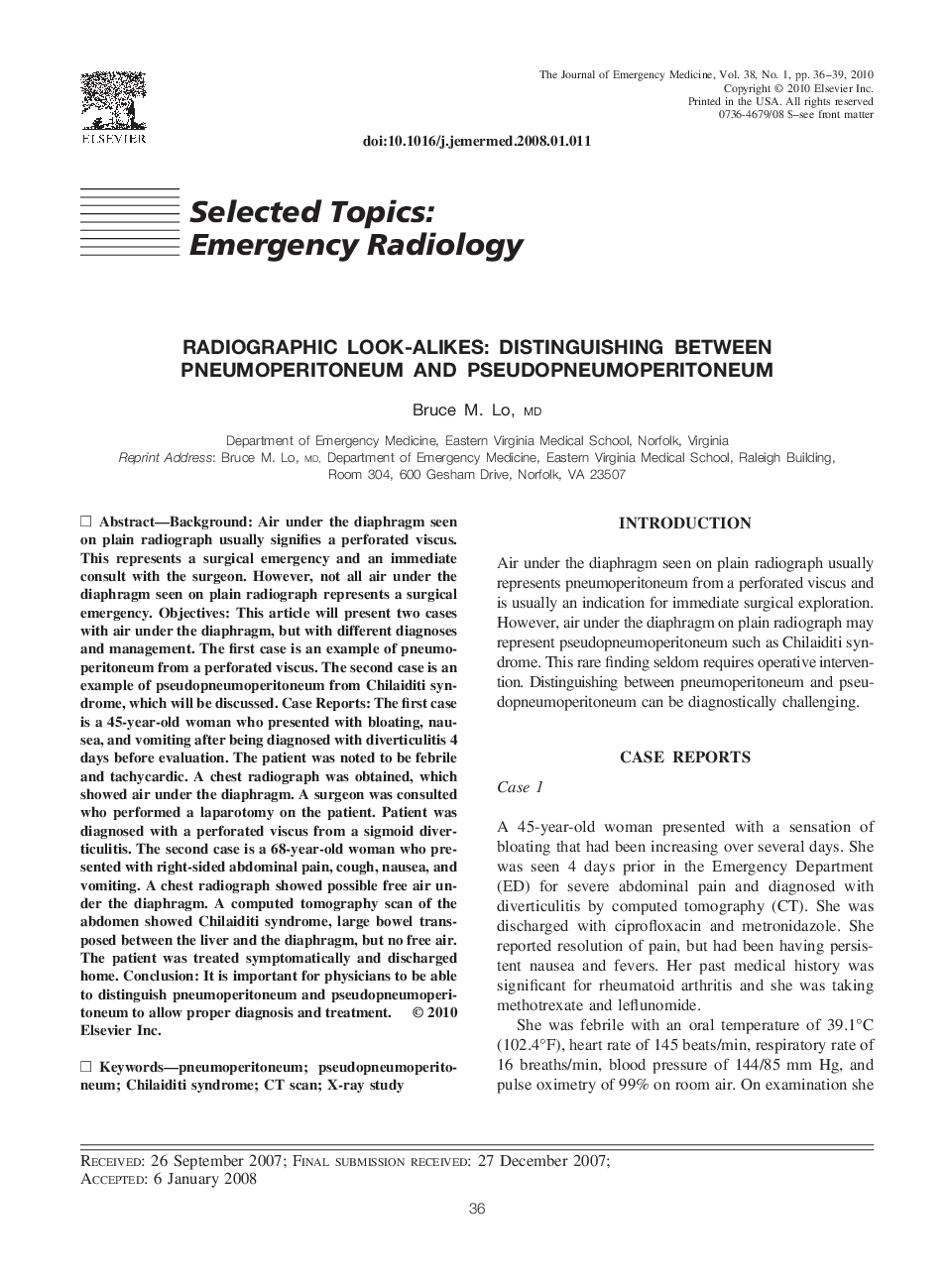| Article ID | Journal | Published Year | Pages | File Type |
|---|---|---|---|---|
| 3248925 | The Journal of Emergency Medicine | 2010 | 4 Pages |
Background: Air under the diaphragm seen on plain radiograph usually signifies a perforated viscus. This represents a surgical emergency and an immediate consult with the surgeon. However, not all air under the diaphragm seen on plain radiograph represents a surgical emergency. Objectives: This article will present two cases with air under the diaphragm, but with different diagnoses and management. The first case is an example of pneumoperitoneum from a perforated viscus. The second case is an example of pseudopneumoperitoneum from Chilaiditi syndrome, which will be discussed. Case Reports: The first case is a 45-year-old woman who presented with bloating, nausea, and vomiting after being diagnosed with diverticulitis 4 days before evaluation. The patient was noted to be febrile and tachycardic. A chest radiograph was obtained, which showed air under the diaphragm. A surgeon was consulted who performed a laparotomy on the patient. Patient was diagnosed with a perforated viscus from a sigmoid diverticulitis. The second case is a 68-year-old woman who presented with right-sided abdominal pain, cough, nausea, and vomiting. A chest radiograph showed possible free air under the diaphragm. A computed tomography scan of the abdomen showed Chilaiditi syndrome, large bowel transposed between the liver and the diaphragm, but no free air. The patient was treated symptomatically and discharged home. Conclusion: It is important for physicians to be able to distinguish pneumoperitoneum and pseudopneumoperitoneum to allow proper diagnosis and treatment.
